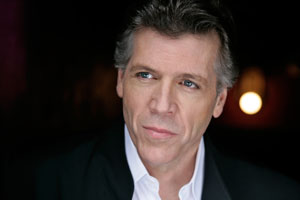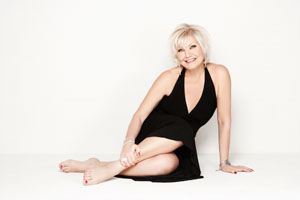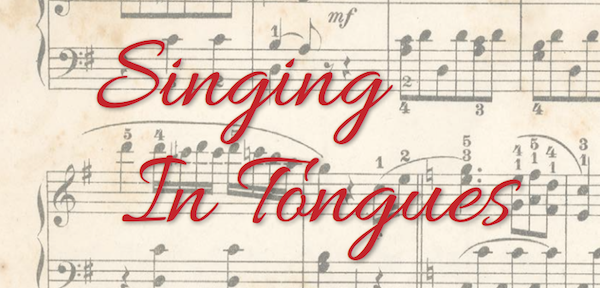Song itself is the lingua franca of art
By Mark Thomas Ketterson
I recently had one of those conversations that only occur between opera lovers and non-classical-music-loving friends. I mentioned having attended a performance of Debussy’s opera Pélleas et Mélisande with the Chicago Symphony Orchestra, an offering in their recent French festival. “An opera?” my friend asked, with a puzzled look. “Don’t operas have to be in Italian?” I smiled and explained there are wonderful operas in many languages.
One can explain that confusion as a lack of exposure, but regarding the arena of the art song, a similar situation oddly occurs among some of even the most erudite classical fans, who might as well wonder, “Don’t art songs have to be in German?” For many, a song recital is by definition a “Liederabend,” a traversal of Franz Schubert, Robert Schumann, and maybe some Hugo Wolf tossed in. That art song also exists in many languages seems almost off the radar.
Baritone Thomas Hampson, one of the great contemporary heirs to the legacy of international song, has a few thoughts on why that is. “Well, let’s start with that word, ‘art song.’ I am going to sympathize with these poor bastards and say that I don’t think we should use that term. It is wholly off putting and distracting. Let’s move over to what a lot of us in the industry are calling it, ‘classic song.’ That’s not just a clever new word; it is very legitimate, because classical music is born of an intentional desire to communicate an intentional aspect of the human experience with intentional use of musical devices. Classic song—in German we call it Lieder; in French, mélodie—is poetry set to music. Song as an art form is born of two independent art forms to build a third. It is born of intentionality. Any epoch has marvelously sensitive people who tell us what it means to be alive in that time. They are poets and composers. The wonder of song is not just the story it tells, it is this brief moment that allows someone to feel something in their own experience or emotional make up they may have forgotten or don’t realize.

“In my opinion, there are two things going on in the German song of the 19th century; there is this incessant drive to find a better way to describe the first-person experience of the emotional landscape of a human being, and that is a direct result of the political upheavals of the 19th century everywhere. The 19th century is about the search for ‘I.’ Until Heinrich Heine, there was no German poetry in the first person. The first part of the century was preoccupied with metaphorically identifying in nature symbols of the landscapes of our lives. Then in the 1840s they said, Let’s keep the nature metaphor, but I get to choose what in nature is a metaphor for my feelings. This is powerful stuff.”
That power exhibited itself in some rather surprising places. Consider Finland—a small country, but one that has fielded a prodigious wealth of musicians, including an unusual number of top-flight conductors. For soprano Karita Mattila, who will be heard in recital in Ravinia’s Martin Theatre on August 10, Finnish song provides a particularly moving experience. “I will be doing Sibelius and Sallinen, one to close the first half of the program, then to open the second. Performing these songs is like a greeting from where I am from. It feels very special, something from the inner world of myself. I never tire of them, and I am so happy that in spite of the language and exotic atmospheres, I receive many requests to hear more, and that makes me very proud. I think of it as a duty. If you have that kind of duty it makes life more meaningful. The character of these songs is so different from the German; the language is so different. Finnish is a very good language to sing. It brings a new phrasing; you are painting while you are singing. When you enter the German world, you go into an international tradition that has a long reach, vertically and diagonally. But when I describe the Finnish songs, my soul trembles, and maybe my voice a little bit, too!”
Beyond Germany, the strongest classic song tradition is undoubtedly French. French mélodie burst into life in the mid- 19th century, after the German form had reached its zenith, and emerged from an earlier French form, the romance. Like its German counterpart, mélodie drew its texts from the best of the French poets and achieved an extraordinary fusion of musical and linguistic values. Hector Berlioz solidified the form with his cycle Les nuits d’été, which remains one of the great examples of French song. Gabriel Fauré, Henri Duparc, Reynaldo Hahn—the list of great French song composers is extensive, and their output is joined by that of operatic composers Charles Gounod and Jules Massenet, as well as the great instrumental composers Maurice Ravel and Claude Debussy. “As detailed and as nature-metaphoric as German literature was,” Hampson reminds us, “the French were the first to explore the interior life of the human being. [For instance,] Baudelaire, with his Les fleurs du mal in 1855, the same year as the first edition of Whitman’s Leaves of Grass. Now, they didn’t know anything about one another, and that is an astounding fact, as the interior life of Whitman was so similar to the French. In every language of what we would call Western civilization, the 1840s and 1850s was this huge political and personal vat that was overflowing with the right to self-determination. There is no stronger identifier of self than poetry and music.”

“It is so interesting you asked me the similarities between German and Finnish song,” Mattila reflects, “because on my program there are also Duparc songs. It is interesting to bring my experience with Wagner to Duparc, because he was so influenced by Wagner, and you can hear it in these songs. [But] he is a very French composer, for sure.” Another of Ravinia’s recitalists this season, the beloved mezzo-soprano Frederica von Stade, has won considerable success as a French stylist. September 10 brings what promises to be a spectacular musical evening as von Stade joins fellow mezzo Laurie Rubin in the Martin for a program that includes Fauré, selections from Poulenc’s Banalités, and a sampling of Berthomieu’s Les jardins de Paris.
As for the Italian language—though Italy is given the moniker “The Land of Song,” the beloved boot country’s legacy in terms of classic song proper is perhaps not quite as rich as we see in surrounding areas. Certainly Italy’s enigmatic Neapolitan songs have made local stars of generations of gondoliers and enhanced the celebrity of operatic superstars, too, including Carlo Bergonzi, Franco Corelli, and Luciano Pavarotti. Many classical singers also revere the Arie Antiche, ancient songs and arias from 18th-century operas now long forgotten. They are lovely, and deceptive in their seeming simplicity; as soprano Anna Moffo once observed, “Singing ‘Tu lo sai’ or ‘Del mio amato ben’ [two of the most familiar of the Arie] is much more difficult than singing ‘Un bel dì’ [the grand aria from Puccini’s Madama Butterfly]. The Italian operatic composers of the 19th century composed songs as well, though most of these various examples do not register as classic song in the manner under discussion here. That has fallen to composers of a later period, notably Luciano Berio with his Folk Songs cycle, written for the great song stylist Cathy Berberian and first performed in 1964. Ravinia audiences recently had the opportunity to hear Berio’s cycle for the first time on July 5, when soprano Dawn Upshaw performed them in the Martin with The Knights.
One of the most interesting traditions has developed right here at home. As with Italy, distinction must be made between American popular music and the classic songs of such composers as Samuel Barber, Amy Beach, and Aaron Copland. “The miracle of American song,” Hampson enthuses, “has been to tell the story of this cantankerous thing we call American culture. We are not preoccupied with whether it sounds like Brahms or Schubert. It is our music, our people saying, I was born there but I was raised here; all these ideals of what we call ‘E Pluribus Unum,’ which doesn’t mean we are all the same. It means we are different and believe in the right to be together. Many American composers are children of immigrants or immigrants themselves, and have spent time contemplating what it means to be an American. We have a different point of departure than Europe. The desire to say who we are and who we should be is similar, but to understand American song we have to look at it through prisms of 10- or 15-year periods. The people in the 1880s are completely different from the people before World War I. I see American song as a diary of our existence. I see song as a diary of human existence, but I see American song as a diary of who we are as Americans, in all of our differences. E Pluribus Unum. The miracle of both sides of that equation is to be found in our arts and humanities and, specifically, in our songs.”

The baritone brings his passion for American song to the Martin on July 28, when he performs a number of American works within an eclectic program of international song literature, including the Chicago premiere of Jennifer Higdon’s Civil Words, which was commissioned for Hampson by Carnegie Hall. [Ravinia audiences may recognize such Higdon works as Loco (commissioned for the festival’s centennial) and Concerto 4-3 (commissioned for and featuring the string trio Time for Three)—both performed by the Chicago Symphony Orchestra with Christoph Eschenbach—as well as her piano trio, championed by the Ravinia favorite Lincoln Trio. Her first opera, Cold Mountain, is receiving its premiere this summer in Santa Fe and stars another Ravinia favorite, baritone Nathan Gunn.]

Hampson caps the discussion with a pointed observation that brings analysis of song full circle, from the relatively young American consciousness back to the venerated German. “I deeply appreciate civic opera, civic buildings, civic responsibility, and civility towards your neighbor. This is why civil discourse is so powerful. The birth of that was Des Knaben Wunderhorn and the poem ‘Die Gedanken Sind Frei’—‘the thoughts are free.’ Pete Seeger made that song very famous in English! This is all one continuum that we are all part of. One river with many wells.”
Mark Thomas Ketterson is the Chicago correspondent for Opera News. He has also written for Playbill, Chicago magazine, Lyric Opera of Chicago, Houston Grand Opera, and Washington National Opera at the Kennedy Center.

